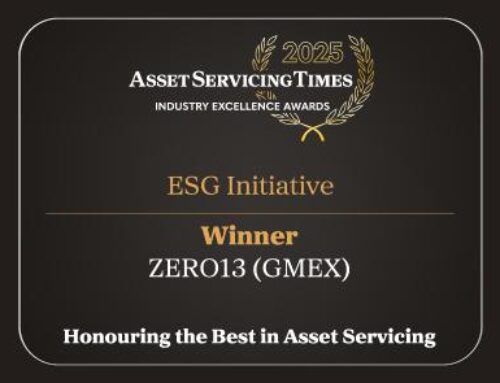An increasing number of TradFi (traditional finance) Tier 1 and 2 institutions which traditionally operate in a CeFi (centralised finance) style are seeking access to the DeFi (decentralised finance) world, packaging products and services to mimic the centralised world. These segments acknowledge the need for some level of TradFi/DeFi/CeFi infrastructural integration to create HyFi (hybrid finance),e.g., with the FIX trading protocol, or SWIFT MQ for post-trade processing, or traditional API technologies – none of which are going away any time soon. Many more of the tools institutions rely on to manage and deliver core services simply don’t exist in the DeFi world but are nonetheless essential – integration with risk management systems, for example, and within trading, clearing and settlement workflows. Because everyone wants to do things slightly differently, market participants will want to connect and collaborate using multiple solutions which encompass multiple APIs and blockchains. To accommodate the vagaries of different players, new networks and technologies should integrate and interoperate with traditional infrastructures. For example, Invesco has launched exchange-traded Bitcoin products with a ‘wrapper’ that creates traditional securities products (with underlying custody maintained with a digital custodian) – a great example of HyFi, as these types of products can be listed on either/both traditional and digital exchanges.
Another example is TP ICAP, the world’s largest interdealer broker, recently announcing that the first digital assets trade was processed on its Fusion Digital Assets platform, which is using GMEX Technologies components at its core together with a post trade platform to enable connectivity to multiple custodians including Fidelity Digital Assets. The digital assets held at the custodian as collateral are reflected upstream as a credit for clients, and that credit is allocated to be made available for the trade which means the asset isn’t moving on chain and off chain all the time. Real time netting takes place, then, at a given point in time, there’s net settlement where there is an on-chain movement at the custodian level. This type of approach is also very energy efficient and lends itself well to handling a broad range of assets classes including digital carbon credits and ESG securities. In reality, even where institutions are fully open to decentralised technologies, they won’t embrace all of them, so the concept of a ‘network of networks’ is also very important. One way to achieve this is an orchestration layer that allows interoperability between TradFi, DeFi and CeFi. An interoperable, HyFi model lends itself to tokenisation opportunities, increased distribution and, ultimately, increased revenues. It also supports experimental product and service development, and scalability, without significant associated investment.
Hybrid solutions can help to resolve the ‘chicken and egg’ (what comes first) conundrum that can often result in projects failing to get off the ground at all. Looking something like an OpEx-driven model, companies and institutions can try things out without huge cost and risk. What we know for sure in this current economic climate is that the glory days of financial services where companies would happily spend millions of dollars testing out new product strategies are long gone, replaced with increasing pressure to reduce operational costs and protect profit margins. Regulation and governance are also critical success factors in reaching the TradFi/DeFi/CeFi convergence tipping point to create HyFi. The need for a more regulated DeFi environment is a given; institutions must be able to leverage standards of best practice in terms of identifying and interacting with counterparties and, indeed, be able to validate the legitimacy of what they’re interacting with. Similarly, as regulated entities themselves, buyside market participants might be keen to access these potentially very attractive, high-yielding opportunities (directly and in terms of funds management) but they also have stringent fiduciary responsibilities with respect to knowing who is on the other side of any transaction. To that end, Virtual Asset Service Providers (VASPs) are now included in FATF guidelines, alongside financial institutions, and are required to maintain (and share) required information for all transactions in excess of $1,000.
Managing the DeFi equivalent of ‘total value locked’ (e.g. to a blockchain) requires the same level of automation as traditional AUM (assets under management) with respect to threat identification (and response) and automated investigations processes. Product issuers have to consider how to continually apply and comply with FATF and OFAC obligations, not as an afterthought or event response but as a seamless, integrated activity. For example, Pyctor, incubated under ING Labs and now part of the GMEX Group, has a distributed, open-source model for FATF compliance and AML validation, driven by a two-layer blockchain; another example of TradFi, DeFi and CeFi convergence. Industry consensus is that there simply isn’t enough data around decentralised processing and a lack of clarity on exactly what data needs to be captured and how. The particular challenge for decentralised finance is the fact that non-custodial wallets and smart contracts manage the activity in the transaction lifecycle intrinsically; there are no single counterparties. Regulators in a number of jurisdictions are pushing back on this point, asserting that even in a decentralised transaction there will be developers and/or a governance structure that point at a single entity, set of entities or individuals. Resolving this challenge requires a mix of technology and policy and, where governance of digital assets are encoded, the lines get more blurry – it’s not yet entirely clear how policy makers will insert themselves into the process.
There’s still a lot of work to do until the first institution is ready to announce that it is putting 20% of its assets under management on a distributed ledger; although, with asset management firms such as Abrdn, Alliance Bernstein, Franklin Templeton Blackrock, Fidelity, Statestreet and KKR all expressing interest in digitising funds, maybe we are closer than we think? True industry convergence requires a multi-pronged approach; from self-regulation to security, and pre-emptive action to fill gaps in understanding of where (potentially illicit) fund movement occurs, and from whence it originates before hitting an exchange (centralised or decentralised). Beyond that, we need to remove friction and enable market participants to quickly create product offerings and test market opportunities. A robust HyFi infrastructure can help unlock this potential, offering the ability to enter new regions and territories to comply with local requirements and regulations, to test new strategies and products in a commercially viable way and to take a more granular approach to risk identification. A HyFi approach will also ensure that many institutions, which want access to the digital assets but don’t want to run blockchain nodes and don’t want to be on chain, can do so by integrating into their existing systems using APIs – meanwhile digital asset infrastructure savvy institutions can utilise their chosen blockchain driven approach and have a combination of both.
Looking to the future, banks and institutions should be focused on how to ingrain new digital technologies within much-needed infrastructure modernisation to support an increasingly competitive commercial environment. The fantastically successful, pioneering AWS/Amazon DeFi model and mindset – experiment with real assets, take chances, develop more, more proactively without undue risk and cost – is a great example that should be adopted by the financial industry with respect to embracing digital technologies and assets.


